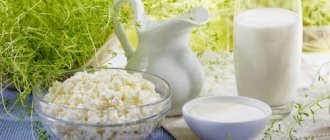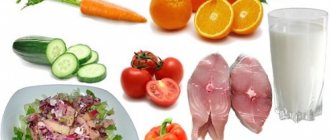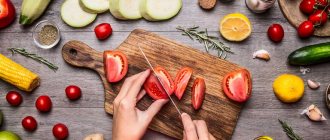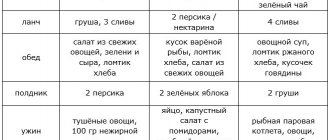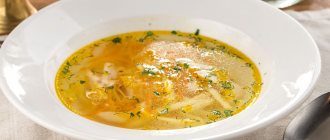Veganism is one of the forms of vegetarianism, characterized by particular rigor, selectivity and scrupulousness in the issue of nutrition. Adherents of this diet categorically refuse products associated with inhumane treatment of animals, birds, fish and even insects.
For vegans, any exploitation of all representatives of the animal world is unacceptable.
Not only cruelty to animals is highly condemned, but also their use in scientific experiments and entertainment. All products of modern industrial livestock farming, poultry farming and fishing are strictly prohibited.
Nutrition
In fact, vegetarians and vegans are the same as, for example, a plant and flowers, i.e. a genus-specific pair. Vegetarianism is a broader, generic concept, and veganism is narrow, i.e. specific. And the main difference between them is nutrition.
Food
Vegetarians do not eat only meat. As for such controversial products as eggs and milk, this is a personal matter for everyone. General nutritional principles do not prohibit eating them for the reason that you don’t have to kill anyone to get them.
Vegans (often also called pure or absolute vegetarians) refuse not only meat. Their diet is much stricter. They do not eat fish, seafood, eggs or milk. Everything related to animals is strictly prohibited. It even comes to the point that they refuse to eat gelatin, because it is made from connective tissue and bones of livestock (which means that many confectionery products are banned), and honey, because it is mined and produced by bees . And this is the main difference between vegans and vegetarians.
Based on this, we can draw the following conclusions about the vegan diet:
- it is much poorer than that of vegetarians;
- characterized not only by scarcity, but also by imbalance;
- it contains virtually no protein, which is found in eggs and dairy products;
- It is very difficult to create a menu;
- gets boring quickly;
- has many more contraindications;
- negatively affects the functioning of many organs and health.
These differences are not in favor of veganism, if only because such a diet is fraught with numerous health complications.
Classifications
Since vegetarianism is a fairly broad concept, it includes many subtypes. As a rule, the basis for classification is food products that are either allowed for consumption or not. In turn, each of these groups is divided even more finely depending on religious beliefs, traditions and personal experience.
Vegetarianism classification:
- Ovo-lacto vegetarians do not eat meat or fish, but do include eggs and milk in their diet;
- ovo-vegetarians exclude meat, fish and milk, but do not give up eggs;
- Lacto-vegetarians, on the contrary, extend the ban on meat, fish and eggs, but enjoy dairy products;
- Vegans do not accept all animal products.
Veganism classification:
- raw foodists refuse any processing of food, i.e. they eat everything raw;
- Fruitarians eat exclusively plant fruits.
So from the point of view of subspecies, these two food systems and worldviews also have significant differences.
Causes
It is one thing when a person becomes a vegetarian for medical reasons (to reduce the risk of a particular disease) or for economic reasons.
But the situation is completely different if the choice is made because of religious or ethnic principles. Many are guided by moral and environmental views (you cannot kill animals - this has a negative impact on the environment). Here you can no longer take a step to the right or left, since the taboos in such food systems are very strict. And this applies specifically to vegans. That is, the differences between them and vegetarians may lie much deeper than it seems at first glance.

So from a nutritional point of view, a vegan differs from a vegetarian in many ways. When choosing one of the directions for your lifestyle, it is worth asking yourself the question of how these diets will affect your health and how strong your fortitude is to refuse what is prohibited here.
Vegan menu for the week
A pre-prepared and scheduled menu significantly reduces the chances of disruptions. It is best to write or print out your future diet for at least a week on a piece of paper. This will give you the opportunity to buy the necessary products and select recipes in advance.
At first glance, it may seem that following this regime will have to give up everything that is truly tasty. In truth, few would say that celery tastes better than a juicy steak. And if he says it, he’s obviously lying. However, the world of plant-based foods is much wider and brighter if you look closely at it. What is one soybean worth? It can replace both meat and fish with the right spices. Tofu cheese, by the way, is also made from it. Nobody banned mushrooms either. In addition, there is still a lot of grain left for all kinds of cereals.

The first day:
- breakfast – a plate of oatmeal on water with raisins, tea (can be green or black);
- lunch - fruit salad or one large fruit;
- lunch - vegetable soup, diet bread;
- dinner - salad of greens, one orange, cucumber and soy sauce.
Second day:
- breakfast – bread with homemade tofu and herb paste, tea;
- lunch - vegetable salad;
- lunch – cream soup from any vegetables;
- dinner - baked potatoes in foil, cucumber or other fresh vegetable.
Day three:
- breakfast – fruit salad, tea;
- lunch – half a glass of nuts or seeds;
- lunch – a portion of buckwheat with stewed soybeans and tomatoes;
- dinner - vegetable stew, several diet bread.
Day four:
- breakfast – a portion of oatmeal with water, tea;
- lunch – one baked apple;
- lunch - soup with vegetables and herbs;
- dinner - a mix of fresh lettuce, tofu and orange.
Day five:
- breakfast – pearl barley porridge with pieces of dried fruit, tea;
- lunch – one large fruit or a handful of berries;
- lunch – stewed beans or lentils in tomato juice, a couple of crispbreads;
- dinner – baked eggplant with tofu and celery.
Day six:
- breakfast – boiled pumpkin puree with raisins and walnuts;
- lunch – smoothie of berries and fruits;
- lunch - boiled rice with corn and green beans;
- dinner - a plate of vinaigrette, a glass of sour juice.
Day seven:
- breakfast – cabbage and carrot salad with herbs, tea;
- lunch – a handful of nuts, a glass of juice;
- lunch – millet porridge with stewed mushrooms;
- dinner - salad of green tomatoes and tofu cheese (can be replaced with boiled soybeans), non-acidic juice.
When choosing fruits during a vegan diet, it is better to avoid high-calorie bananas and grapes. It is recommended to give preference to those vegetables, berries and fruits that grow in your native region.
You need to drink more purified water. The liquid promotes better cleansing of the body and effective weight loss.
In addition, if you drink a glass of water at approximately equal intervals (1.5-2 hours), the feeling of hunger is dulled.
List of prohibited foods for vegans
As an appendix to this paragraph, we bring to your attention a complete list of products that are prohibited for vegans:
Animal products:
- meat: beef, pork, veal, lamb, horse meat, offal, etc.;
- game: turkey, goose, chicken, duck, partridge, quail, etc.;
- fish and seafood: anchovy, shrimp, mussels, squid, crabs, fish sauce, lobsters, etc.;
- dairy products: yogurt, cheese, milk, butter, ice cream, cream, kefir, yogurt, etc.;
- eggs: chicken, duck, quail and even fish;
- bee products: honey, royal jelly (royal jelly), pollen, propolis.
Nutritional supplements that are made from animals:
- food additives with an E in front: 120, 322, 422, 471, 542, 631, 901, 904;
- cochineal (carmine);
- gelatin;
- fish glue (used in the production of alcoholic beverages);
- natural flavors: beaver musk;
- Omega-3 polyunsaturated fatty acids;
- gummilac (shellac);
- vitamin D3;
- dairy ingredients: whey, casein, lactose.
Controversial products (look carefully at the labels):
- baked goods may contain L-cysteine (derived from bird feathers);
- beer and wine - egg white, casein, gelatin, fish glue;
- confectionery products - gelatin, shellac, carmine;
- French fries and other fried foods - fried in fat;
- olive tapenade - anchovies;
- pesto sauce - cheese;
- pasta - eggs;
- potato chips - animal flavors, casein, whey;
- sugar - bone char;
- chocolate - whey, milk;
- fruit and vegetable products - wax treatment;
- Worcestershire sauce - anchovies.
The consumption of certain vegan foods is limited:
- vegan fast food: candy, ice cream, cookies, chips, sauces - because of sugar and fat;
- vegan sweeteners: molasses, agave, date and maple syrup - because of the sugar;
- vegan meats and cheeses - due to numerous nutritional additives;
- artificial milk - because of sugar;
- Vegan protein bars - because of the sugar.
It is not difficult to guess that the list of products allowed for vegetarians is much wider, and this is a pleasant difference from veganism.
List of prohibited products

Meat and fish
Vegans do not eat meat: beef, veal, pork, lamb, horse meat. The same list includes all types of offal. Any types of meat products are excluded: sausages, wieners, pates, balyki, hams, lard, canned food, semi-finished products, broths, dry foods and culinary products.
A vegan’s diet does not contain products made from poultry meat: chicken, turkey, duck, or any game. According to ethical considerations of vegans, you cannot eat fish, caviar and seafood (squid, shrimp, mussels, crabs, lobsters).
Eggs and milk
Apart from animal flesh, eggs (chicken, quail, ostrich) are not eaten. The list of prohibited items includes milk and all types of dairy products (cheese, yoghurt, sour cream, kefir, fermented baked milk, whey, cottage cheese, butter, ice cream). Vegans condemn the cruel methods used in modern animal husbandry: captivity, constant milking, slaughter of livestock.
Bee products
Many followers of veganism do not eat or use honey and bee products (wax, propolis, beebread, pollen, royal jelly) in treatment. This is explained by the fact that beekeepers, caring for the preservation and efficiency of the hive, eliminate individual queens and drones, interfering with natural processes. It is also considered incorrect that the resulting honey is taken from the bees and sugar syrup is added in return.
Refined sugar
All products containing refined sugar are also excluded from the diet. The reason is that during the purification process, a carbon filter made from beef bones is used. A vegan diet allows only organic cane sugar, which, thanks to minimal technical processing, is rich in vitamins and valuable minerals.

Gelatin
Confectionery products made with gelatin are included in the list of prohibited products. These include: sweets, candied fruits, cakes, jelly, marshmallows, marshmallows, puddings. Gelatin is a product of animal origin. It is produced by processing the bones, hides, hooves and tendons of cattle and pigs (sometimes fish bones are used). The exception is desserts made with vegetable agar-agar. This jelly-like substance, obtained by processing seaweed, is popular in the confectionery industry.
Yeast
Vegans do not eat foods that contain yeast (living, single-celled organisms belonging to the fungus family). These include many baked goods (pizza, ciabatta, baguettes, donuts, croissants, bagels, bagels, pancakes, pancakes, etc.) and kvass.

Bakery
Bread is not a prohibited product, provided that it is made using a special technology using the correct ingredients. Most types of bread on store shelves are not suitable for a vegan diet. When baking, lubricating the molds with lard or any other type of animal fat is not allowed.
The use of L-cysteine to improve the baking properties of flour is not acceptable, since this food additive (another name is E 920) is synthesized during the hydrolysis of protein waste (bristle, wool, bird feathers). It is completely unacceptable to add ingredients such as eggs, milk (including dry milk), kefir, whey, or butter to the dough.
Mushrooms
Some vegans don't eat mushrooms. Modern science has not decided on their clear classification. In many respects they do not belong to plants. At the same time, like animals, they feed on organic substances, and chitin is present in the cells of fungi. The composition of chemical elements resembles both meat and vegetables.

Alcohol
A selective approach is also taken to drinks. Alcohol in itself is not an attribute of a healthy lifestyle. Much depends on the amount you drink. In reasonable doses, alcohol has a beneficial effect on the body: it relieves nervous tension and promotes relaxation. So, for example, 30-50 mg of vodka, whiskey, brandy or gin is quite acceptable.
Some varieties of grape wine and beer, in the production of which gelatin, refined sugar, egg whites, yeast, casein and other animal products were used, are categorically excluded.
Vegans are very selective about what the food industry offers. They carefully and scrupulously study the composition indicated on the labels, paying special attention to food additives. Most of them, before being added to food products, are tested on experimental animals.
Nutritional supplements
The natural food flavoring beaver musk, for example, is extracted from the endocrine glands of female and male beavers. The bright red food coloring carmine (E 120), often used in confectionery, is obtained from female cochineal insects.
Shellac (E 904), used in the preparation of food glazes, is synthesized from organic matter secreted by tropical insects. Fish glue, widely used in brewing and winemaking, is obtained from the swim bladders of sturgeon fish.
The food additive lecithin (E 322), used in the production of chocolate, icing, margarine and mayonnaise, as well as in the baking of baked goods, is obtained from egg yolk.
Many industrial products sometimes carry hidden dangers. For example, milk fat or milk powder can be found in healthy dark chocolate.
Some varieties of non-dairy creamers contain casein, a complex protein formed when milk curds. Shredded cheese is sometimes found in potato chips.
Health effects
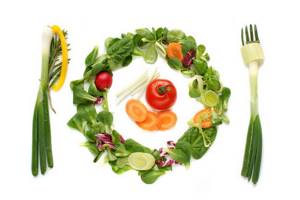
Before considering the following differences between vegans and vegetarians, you need to pay attention to the fact that their nutritional systems affect health and well-being. This is the subject of many scientific studies that are still being conducted. Their results most often contradict each other. However, you need to know what you are dooming your body to by switching to this lifestyle.
Vegetarianism in its broad concept (when eggs and milk are allowed):
- reduces the risk of developing stomach, liver and intestinal cancer, heart attack, hypertension, diabetes, atherosclerosis, cardiovascular diseases;
- reduces blood cholesterol levels;
- allows you to create a balanced vegetable-dairy menu that will fully provide the body with the necessary substances;
- improves well-being;
- strengthens the immune system;
- increases life expectancy.
Veganism:
- leads to a deficiency of vitamins B2, D, B12, amino acids, iron, iodine, calcium;
- increases the risk of developing anemia and iron deficiency;
- destroys tooth enamel and bones;
- disrupts the functioning of the thyroid gland due to the lack of tyrosine in the diet;
- accompanied by brittle nails, hair loss, gastrointestinal problems, low performance, and in women - menstrual irregularities;
- slows down the process of protein absorption (of which very little is supplied anyway), the result is muscular dystrophy, decreased immunity, and the risk of developing tuberculosis.
This is controversial data, scientific assumptions that are constantly confirmed or refuted. But, one way or another, all these facts should lead you to a single conclusion - the most significant difference between vegetarians and vegans. The former, although they are criticized, still have a reduced risk of developing many diseases, thanks to a more or less balanced diet. But the latter in most cases suffer from a deficiency of vitamins and minerals. This leads to serious health problems.
Types of veganism
Separately, it is worth dwelling on the classifications, since many do not understand, for example, how vegetarianism differs from a raw food diet. You need to know these nuances so that when you switch to one of these systems, you do not violate its boundaries and correctly self-determinate.
In total, 4 currents can be distinguished:
- Traditional vegans do not eat meat, milk, eggs, fish and honey, leaning on cereals, grains, nuts, vegetables, herbs, berries, and fruits.
- Raw food diet - eating only those products of plant origin that have not been processed by humans in any way.
- Macrobiotics - avoidance of sugar (bone charcoal is used to purify sugar obtained from beets) and oils.
- Fruitarians eat only fruit (the classic representative of this group is Hollywood actor Clint Eastwood).
Vegetarians, vegans and raw foodists are essentially similar (they are united by the rejection of animal products), but each has its own nuances (the differences relate to the list of permitted and prohibited products and methods of processing them).
Vegan borscht recipe
This version of a common dish is no less tasty than its traditional prototype. Herbs and spices add special piquancy to it and it is just as satisfying. In general, eating liquid food every day is a prerequisite for proper digestion and metabolism. This applies to both the diet period and the normal diet.
For borscht you need:
- potatoes – 5-6 pcs;
- beets – 1 piece;
- cabbage – 200 g (a quarter of a head of cabbage);
- one medium carrot;
- onions – 1 piece;
- bell pepper – 1 piece;
- tomato paste or several tomatoes;
- garlic – 2 cloves;
- sorrel - a small bunch;
- basil – 2-3 sprigs;
- bay leaf;
- spices.
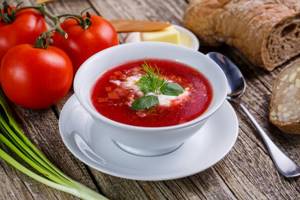
Before starting the main preparation, it is recommended to prepare and roast the beets. To do this, onions, carrots and beets need to be peeled and cut (you can grate them on a coarse grater). In a deep frying pan, fry the beets in vegetable oil for 10-15 minutes until soft over medium heat. In a separate container, fry the onion and carrots and season it with tomato. If fresh tomatoes are used, they also need to be chopped and fried.
2-2.5 liters of water are poured into the pan. Chopped potatoes and fried beets are sent for cooking immediately. Next, add chopped pepper, bay leaf and fry. Cook everything for 10 minutes under the lid.
Shredded cabbage is added 8-10 minutes before the end of cooking. Along with it comes chopped sorrel (can be frozen) and basil. The borscht is seasoned with hot and allspice pepper and salt and cooked for another 3-5 minutes.
After this, you should keep the finished dish under the lid for some more time so that it infuses.
Lifestyle

Among other things, the difference between a vegan and a vegetarian is lifestyle. The latter, as a rule, continues to enjoy all the benefits of civilization, while the former refuses much due to moral and ethical principles. Veganism does not allow any harm to be caused to animals, and therefore invites its followers not to use in everyday life items in the production of which material of animal origin was used.
Restrictions apply to:
- clothing and any other fabrics made of leather, silk, wool;
- fat soap;
- printed photographs (after all, gelatin is required for their production);
- many medicines and cosmetics containing animal extracts;
- entertainment related to the exploitation of animals: zoos, circuses, horse racing, dolphinariums (needless to say about hunting, which is blasphemy for vegans).
Some restrictions reach the point of absurdity, but this is precisely the difference between the concepts.
Table
The table below clearly demonstrates the main differences between vegetarians and vegans:

For the uninitiated, vegetarian and vegan are the same thing. Actually this is not true. Vegetarianism is a generic concept, broader and includes many branches with all their predilections for fruits, milk, eggs, etc. Veganism is a specific concept, narrower, relating not only to nutrition, unlike other movements. Its adherents completely abandon products of animal origin, things made from animal raw materials.
For those who are planning to join this worldview, it is necessary to understand these basic terms and know the differences between them.



